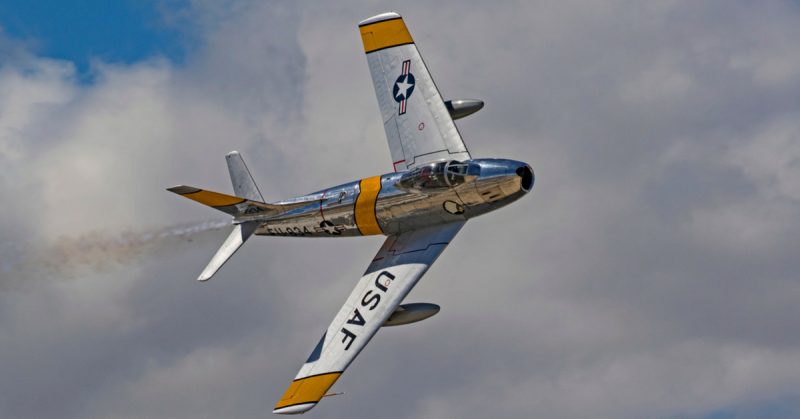The F-86 Sabre had several predecessors, all of them introduced in 1944, the last full year of World War Two. That year the Germans brought their Messerschmidt Me-262 into combat, the Americans developed their Lockheed F-80 Shooting Star, and the British their Gloster Meteor. The De Havilland Vampire, another jet fighter, followed in 1946.
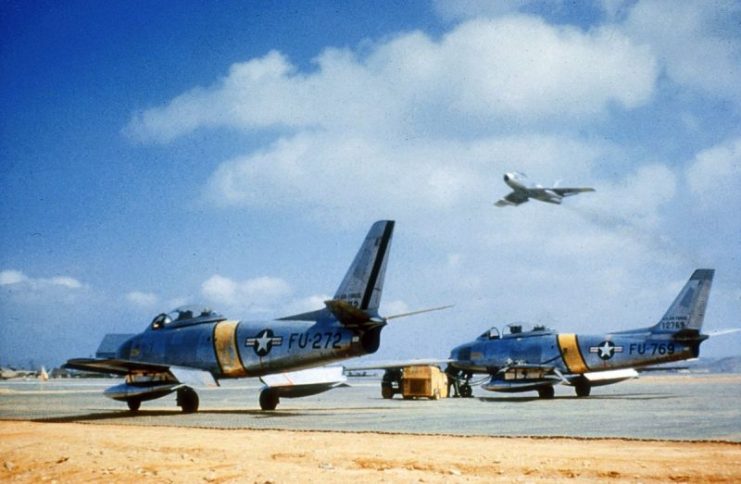
Jet Aircraft in the Korean War
In the war over Korea, which was fought between 1950 and 1953, jets were to be the principle fighters on both sides, as the F-86 was opposed by the Russian MiG-15. Their contests took place at nearly twice the speed and at considerably greater heights than those of the Spitfires and Me-109s that fought the early air battles of World War II, in the Battle of Britain in 1940.
https://youtu.be/2rn2DhW4ZhM
The jets were just as closely matched, on paper, as their propeller-driven predecessors. Above 35,000 ft the lighter MiGs had the edge, while at lower altitudes, the F-86 maneuvered more nimbly.
The MiG, with its 37mm cannon and two 20mm cannons, could outgun the Sabre, which carried six 0.5-inch machine guns. However, the Sabre was fitted with a radar APG-30 gunsight compared to the MiG’s less advanced optical gunsight, and it could outdive its Russian rival.
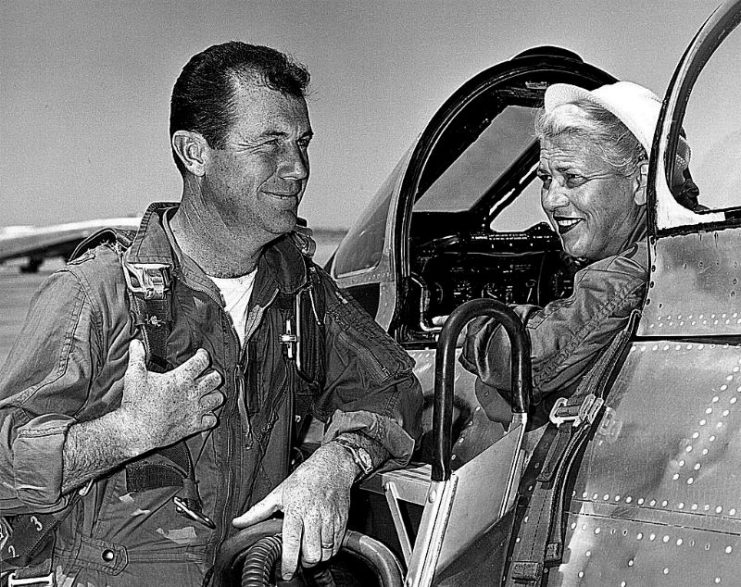
Superiority in the Air, a Vital Advantage
All the same, the most important advantage for the F-86 was the quality and experience of its pilots, who were far superior to the Chinese and North Koreans who flew most of the MiGs.
This factor demonstrated an important principle; that success in war can depend more on man than on machine. It was this that enabled the American and United Nations air forces in Korea to seize the most vital prize in any modern conflict: superiority in the skies.
This was achieved despite serious practical drawbacks. In the terms of modern warfare, Korea was primitive territory. In the mid-20th century, it possessed only one permanent airfield and that was in Seoul which changed hands several times during the Korean War.
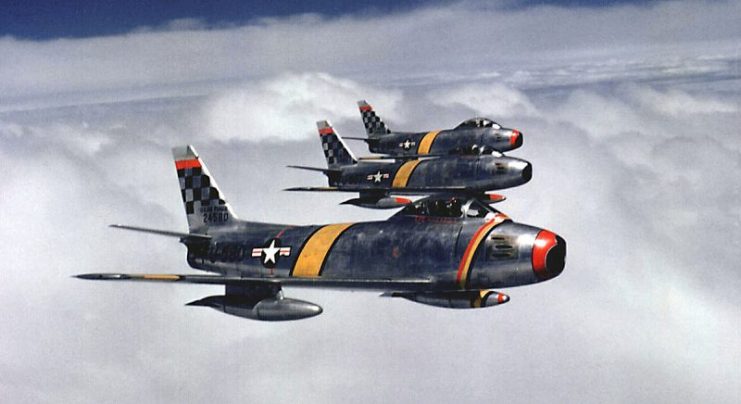
Korea’s Poor Runways
Jet aircraft, with their long take-off and landing runs, needed properly paved runways measuring 6,000 ft. or more in length. What they got in Korea was about 5,000 ft. of pierced steel planking laid on rough, rocky ground with enough lumps, bumps and uneven patches to ensure that a proportion of jets suffered burst tires on take-off or worse.
Yet, despite these and other equally taxing problems, the U.N. jets still managed to master the skies over Korea. Acting mainly in support of ground forces, they paralyzed movements of communist troops and supplies so thoroughly that many enemy offensives faded from sheer starvation. In addition, contests between Sabres and MiGs became so one-sided that the final “kill” ratio which the Sabres achieved stood at 25:2.
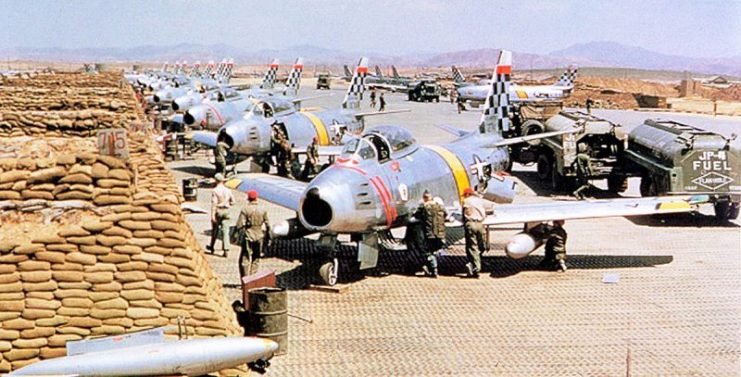
Sabres versus MiGs
The first of these dogfights took place on December 17, 1950, the same month the Sabres arrived in Korea. The American aircraft were F-86-As of the Fourth Flight Interceptor Wing, and they made their debut by downing four MiGs. This presented their enemy with a much more formidable foe than the F-51 Mustangs and F-80 Shooting Stars which in the previous seven weeks had experienced a very hard time coping with them.
The F86-A might have arrived on the Korean scene much earlier had it not been the deliberate choice of its manufacturers, North American Aviation, to accept a year’s delay in delivery for the sake of fitting the aircraft with swept wings.
The 1944 prototype, the XF-86, had had the conventional straight wings and a “straight through” jet flow. Powered by an Alliance TG180 (J35) tube-jet engine, the XF-86 was expected to reach 582 mph with a range of 750 miles and a ceiling of 46,500 ft.
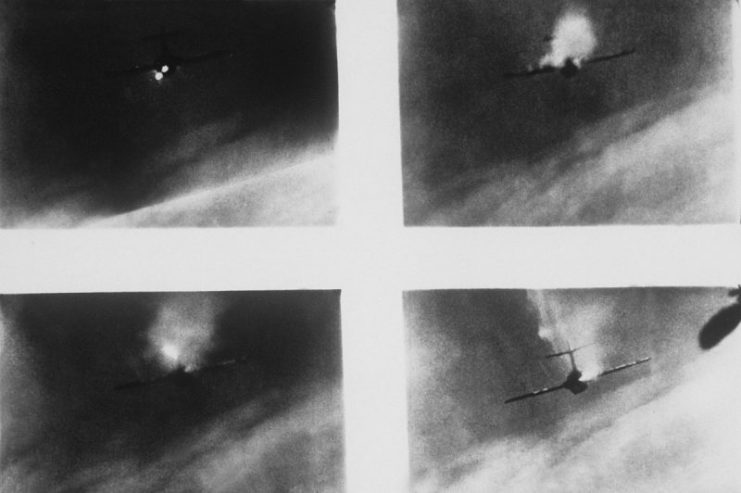
The Swept-Wing Sabres
But when details of German research into swept wings became known after the end of World War Two, the XF-86 underwent a radical alteration by having its wings swept back to an angle of 35 degrees. At the same time, its fuselage was lengthened and it was equipped with power-boosted ailerons.
The result was a supersonic aircraft which, although classified as “subsonic,” first broke the “sound barrier” in the spring of 1948. In subsequent versions of the production model, the F-86 made a virtual habit of breaking world speed records.
